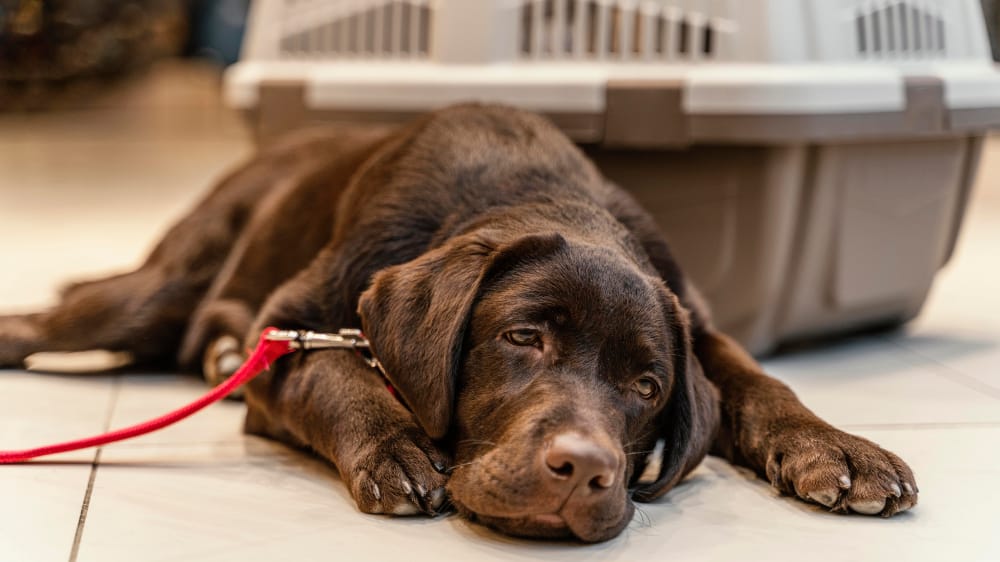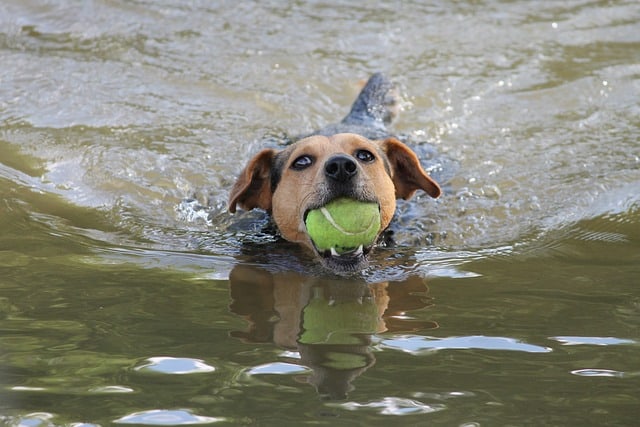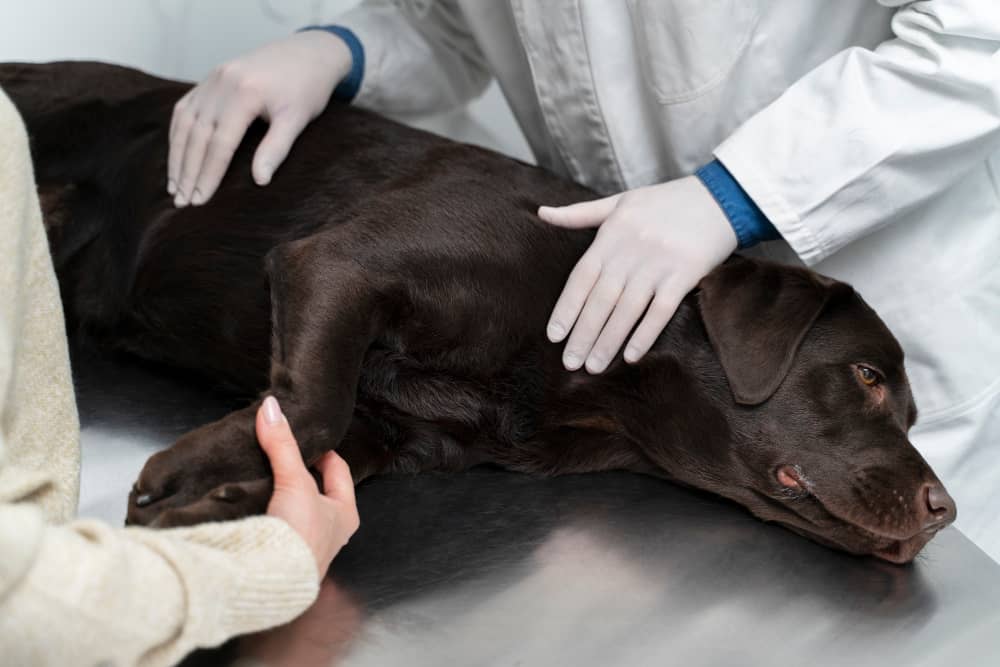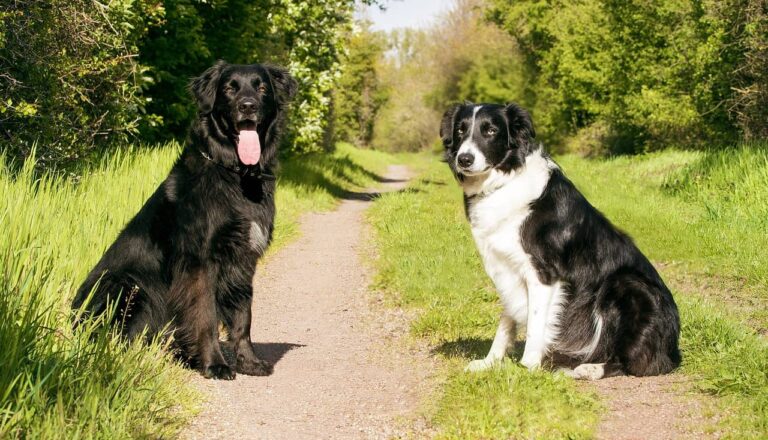Effective Exercises for Dogs with Hip Dysplasia : Exercise Tips

Are you worried about your furry friend suffering from hip dysplasia? Want to know the best exercises for dogs with hip dysplasia? In this article, you’ll find exercise tips tailored for dogs with hip dysplasia. Whether your pup is a Golden Retriever, German Shepherd, or any breed prone to this condition, you’ll discover valuable information to make their life more comfortable.
Contents
- Key Takeaways
- What is Hip Dysplasia
- What Causes Canine Hip Dysplasia
- The Best Exercises for Dogs with Hip Dysplasia
- Swimming
- Walking
- Treadmill Exercise
- Low-Impact Fetch
- Canine Physical Therapy
- Balanced Diet
- Gentle Stretching
- Adequate Rest
- How Does Hip Dysplasia Affect Dogs
- Are long walks bad for dogs with hip dysplasia?
- Conclusion
Key Takeaways
- Exercise is important for dogs with hip dysplasia as it helps with weight management, joint function, and muscle mass.
- Walking and swimming are low-impact exercises ideal for dogs with hip dysplasia.
- Hydrotherapy, such as exercising with an underwater treadmill, can be beneficial for reducing pain and improving mobility.
- Core strengthening exercises and physical therapy can support the hips and relieve pressure on the hip joints.
What is Hip Dysplasia

it is a condition where the ball and socket of the hip joint do not fit or develop properly. This can cause pain and discomfort for dogs and lead to arthritis. It is a common joint condition in canines, especially in larger breeds. It can be genetic and passed down from parents to puppies. However, dogs with hip dysplasia can still live a long, comfortable life with proper management and care.
Exercise helps with weight management, muscle strength, and joint function. Low-impact exercises like walking and swimming are ideal for dogs with hip dysplasia. Physical therapy and rehabilitation techniques, such as hydrotherapy with an underwater treadmill, can also be beneficial for reducing pain and improving mobility.
What Causes Canine Hip Dysplasia
Causes of canine hip dysplasia include genetic factors and other factors such as obesity, poor nutrition, lack of exercise, rapid weight gain or growth, and hormonal imbalances. Canine hip dysplasia is a condition where the hip joint does not develop properly, leading to pain and arthritis. It can affect any dog breed, but larger breeds are more prone to developing it.
German Shepherds, Golden Retrievers, Great Danes, Bloodhounds, and Newfoundlands are considered high-risk breeds. Symptoms include limping, decreased activity, difficulty rising or sitting, hesitation to jump or climb stairs, abnormal gait, pain in the dog’s hip joints, and muscle loss in the hind limbs. Proper management, including exercise, can help alleviate symptoms and improve the quality of life for dogs.
The Best Exercises for Dogs with Hip Dysplasia
There are a few exercises for hip dysplasia available that can help you overcome this issue.
Swimming
Swimming is optimal for dogs with hip dysplasia, providing a low-impact, full-body workout that supports joint mobility and muscle strength. Here’s why swimming is beneficial for dogs :

- Hydrotherapy: Swimming is a form of hydrotherapy that uses water to aid in healing and rehabilitation. The buoyancy of the water reduces the weight and stress on your dog’s joints, allowing them to move more freely and comfortably.
- Low impact: Swimming is a low-impact exercise that minimizes hip stress. Unlike running or jumping, swimming provides a gentle yet effective workout that doesn’t exacerbate hip dysplasia symptoms.
- Muscle strengthening: Swimming engages all major muscle groups, helping to build strength and support the hips. The resistance of the water adds an extra challenge, making it an excellent exercise for building muscle tone and improving overall fitness.
Whether your dog swims in a pool or lake or undergoes hydrotherapy with an underwater treadmill, swimming is a safe and effective exercise that can improve your dog’s quality of life.
Walking
walking on appropriate surfaces is one of the most beneficial exercises for dogs with hip dysplasia. Walking helps improve gait and range of motion while minimizing hip stress. For dogs with hip dysplasia, it is important to ensure that pain is controlled with medication before engaging in walking exercises. Avoid hard surfaces like asphalt or concrete, as they can be harsh on the joints.
Opt for soft surfaces like dirt trails or grassy hills, which provide a more forgiving surface for the canine’s paws. Walking on uneven surfaces can also help improve balance and core strength. Start slowly and gradually increase the duration and intensity of the walks to prevent overexertion. Regular walking can greatly improve the overall health and well-being of dogs.
Treadmill Exercise
Dog hip dysplasia patients can benefit from treadmill exercise. Here are three reasons why treadmill exercise can benefit dogs with hip dysplasia:
- Controlled environment: Treadmills provide a controlled environment where you can monitor your dog’s movement and adjust the speed and incline as needed. This helps minimize the risk of injury and ensures your dog exercises safely and comfortably.
- Low impact: Treadmill exercise is low impact, which means it puts less stress on the hip joints than high-impact activities like running or jumping. This is important for dogs with hip dysplasia as it helps reduce pain and inflammation in the hip joints.
- Improved gait and muscle strength: Regular treadmill exercise can help improve your dog’s gait and muscle strength. The consistent movement on the treadmill helps promote proper joint alignment and strengthens the muscles around the hips, leading to better mobility and stability.
Using an underwater treadmill can be especially beneficial as the buoyancy of the water provides additional support and reduces strain on the joints. Just remember to start slow and gradually increase the intensity of the exercise to avoid overexertion.
Low-Impact Fetch
You can engage your dog in low-impact fetch to provide exercise and mental stimulation while minimizing stress on their hip joints. Low-impact fetch involves using soft toys or balls and playing on grass or sand instead of hard surfaces.
This exercise helps maintain muscle mass and joint function, improves range of motion, and reduces pain and inflammation in the hip joints. Here is a table outlining the benefits and considerations of low-impact fetch for dogs:
| Benefits of Low-Impact Fetch | Considerations for Dogs with Hip Dysplasia |
|---|---|
| Provides exercise and mental stimulation | Avoid excessive running or jumping |
| Minimizes stress on hip joints | Use soft toys or balls to prevent impact |
| Helps maintain muscle mass and joint function | Play on grass or sand instead of hard surfaces |
| Improves range of motion and reduces pain | Monitor your dog for any signs of discomfort |
Canine Physical Therapy
One effective way to help dogs with hip dysplasia is through canine physical therapy, which includes a variety of exercises specifically designed to improve their mobility and alleviate discomfort.
Canine physical therapy focuses on the hip joint and aims to increase the range of motion, strengthen muscles, and reduce pain. Here are three key exercises commonly used in canine physical therapy:

- Range of Motion Exercises: These exercises involve gentle movements of the hip joint to improve flexibility and reduce stiffness. They can include passive stretching, joint mobilizations, and gentle rotations.
- Therapeutic Exercise: This includes walking on uneven surfaces, balancing exercises, and core strengthening exercises. They help improve stability, balance, and overall strength, supporting the hips and relieving pressure on the hip joints.
- Hydrotherapy: Swimming and underwater treadmill exercises are excellent low-impact options for dogs with hip dysplasia. The buoyancy of water reduces strain on the joints while providing a full-body workout and improving joint flexibility and muscle strength.
Balanced Diet
A balanced diet helps maintain a healthy weight, which reduces stress on the hip joints and can alleviate symptoms. Consult a veterinary professional to determine the best diet for your dog’s needs. They may recommend joint supplements or specific dietary modifications to support joint health. Combining a balanced diet with appropriate exercise improves their overall quality of life.
Gentle Stretching
For gentle stretching exercises to effectively manage hip dysplasia in dogs, incorporate a variety of movements that promote flexibility and joint mobility. Gentle stretching can help alleviate pain and stiffness, improve range of motion, and increase overall comfort for dogs with hip dysplasia. Here are three effective exercises to incorporate into your dog’s routine:
- Hip Flexor Stretch: Gently extend your dog’s hind leg backward, holding the position for a few seconds. This helps stretch the hip flexor muscles and improve joint mobility.
- Gentle Leg Lifts: Support your dog’s hindquarters and slowly lift one leg at a time, holding it in an extended position for a few seconds. This exercise helps strengthen the muscles around the hip joint.
- Slow Side-to-Side Movement: Guide your dog in a gentle side-to-side movement, encouraging them to shift their weight from one hind leg to the other. This exercise promotes flexibility and improves balance.
Remember to start slowly and gradually increase the intensity of the stretching exercises as your dog becomes more comfortable. Always consult with your veterinarian before starting any exercise program.
Adequate Rest
To assist your dog’s health and recovery from hip dysplasia, prioritize rest. Rest and recovery are as vital as activity for hip dysplasia dogs. Rest reduces joint inflammation and tension, improving mobility and pain management. Hip dysplasia dogs benefit from low-impact workouts, including swimming, hydrotherapy, and stretching.
See a veterinarian or canine rehabilitation specialist to find the best exercise routine for your dog. Physical therapy can help manage hip dysplasia by improving strength, flexibility, and range of motion with specific exercises. In hip dysplasia treatment for dogs, rest is as vital as exercise.
How Does Hip Dysplasia Affect Dogs
Hip dysplastic dogs often have hip joint pain. Their life quality can be substantially affected by this disorder. Hip dysplasia affects dogs in three ways:

- Limited mobility: Dogs with hip dysplasia may have difficulty walking, running, or jumping due to the pain and stiffness in their hips. This can make it challenging for them to engage in their usual activities and enjoy their daily exercise routine.
- Muscle weakness: Hip dysplasia can cause muscle loss in the hind limbs, leading to weakness and decreased muscle mass. This can further contribute to limited mobility and make it harder for dogs to support their weight and move around comfortably.
- Decreased energy and enthusiasm: The pain and discomfort associated with hip dysplasia can also affect a dog’s mood and energy levels. They may become less active and reluctant to participate in physical activities that they once enjoyed.
Hip dysplasia must be understood to offer dogs the greatest exercise and management strategies. Massage and other hip dysplasia activities can reduce pain, improve mobility, and promote well-being.
Are long walks bad for dogs with hip dysplasia?
Taking long walks may not be advisable for dogs with hip dysplasia. While exercise is important for dogs with hip dysplasia, choosing low-impact and gentle activities on the joints is crucial. Here’s why long walks may not be the best option:
- Increased stress on the hips: Long walks can strain the hip joint excessively, causing discomfort and potentially worsening the condition.
- Risk of overexertion: Dogs with hip dysplasia may have limited mobility and endurance. Long walks can lead to fatigue and muscle soreness, making it harder for them to move comfortably.
- Impact on joint health: Continuous pounding on hard surfaces can accelerate joint wear and tear, exacerbating hip dysplasia symptoms.
Instead, focus on low-impact exercises like swimming, gentle stretching, and controlled leash walks on soft surfaces. These activities can help maintain muscle mass, improve joint mobility, and provide mental stimulation for your canine companion without putting excessive strain on their hips.
Conclusion
Helping your dog with hip dysplasia can be challenging, but incorporating exercises for dogs with hip dysplasia routine can make a significant difference in their mobility and overall quality of life.
Focusing on low-impact activities that strengthen the muscles around their hips can help alleviate pain and improve their range of motion. Always consult your veterinarian or a professional dog trainer before starting any exercise regimen for your furry friend. With the right exercises and proper care, you can support your dog’s well-being and ensure they live a happy and active life despite their hip dysplasia.






